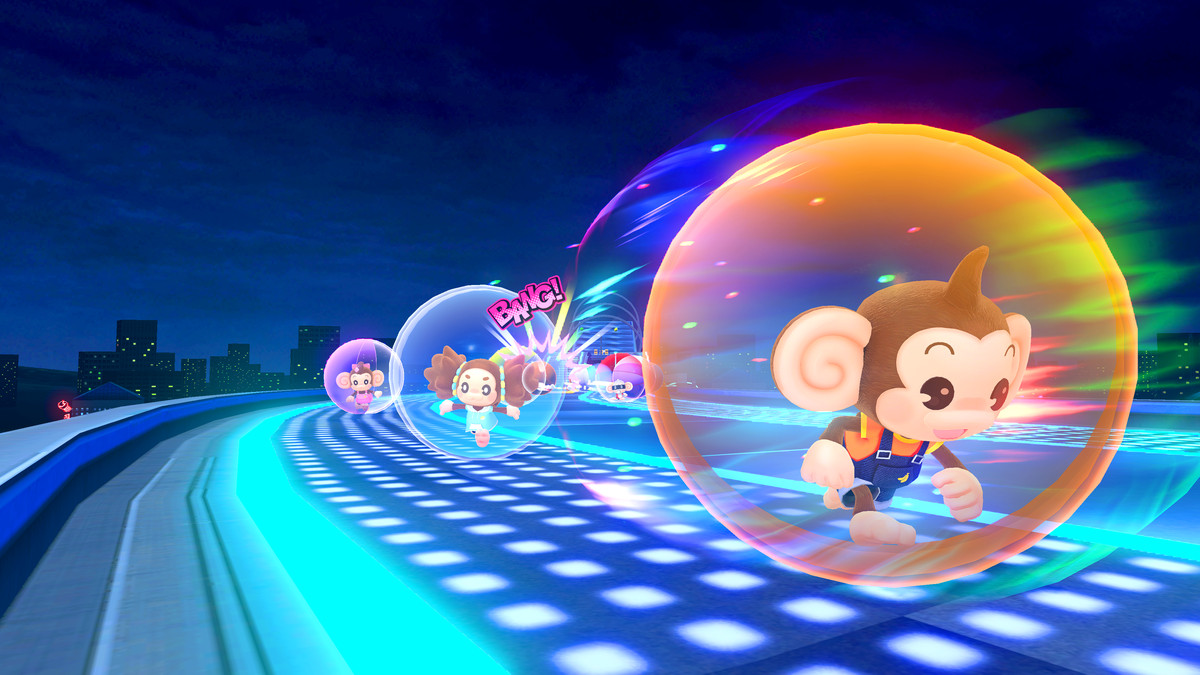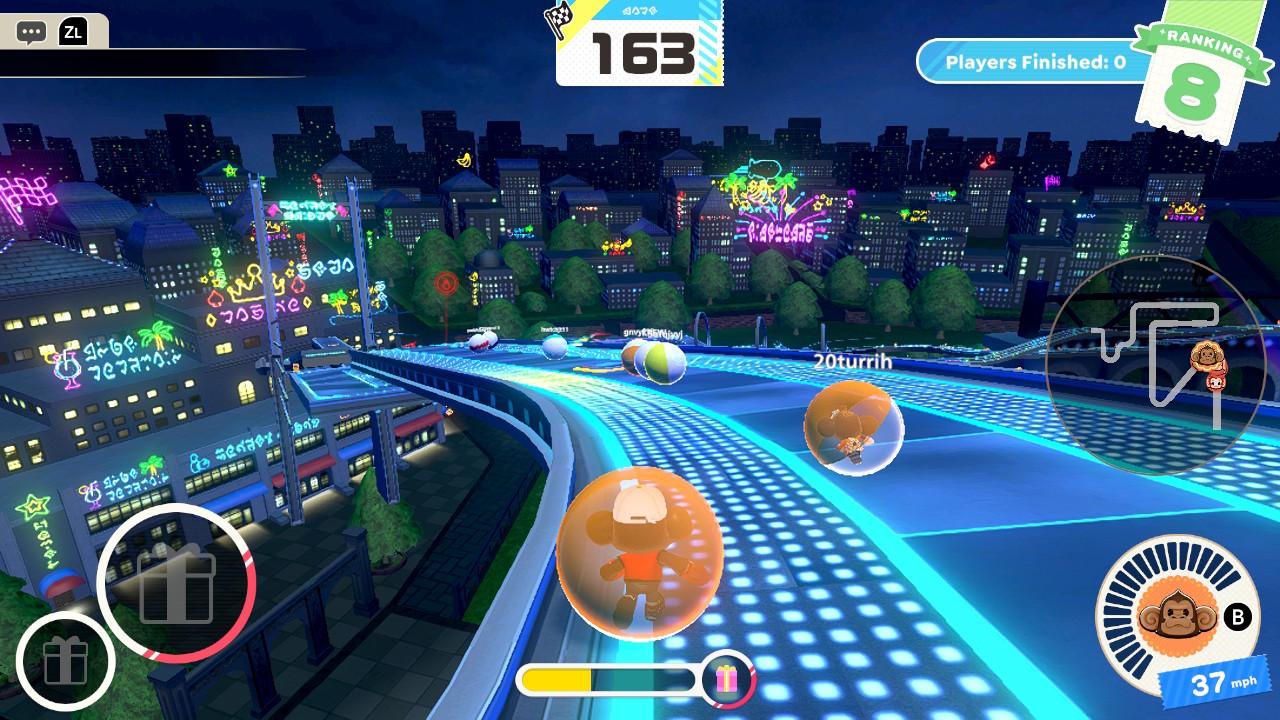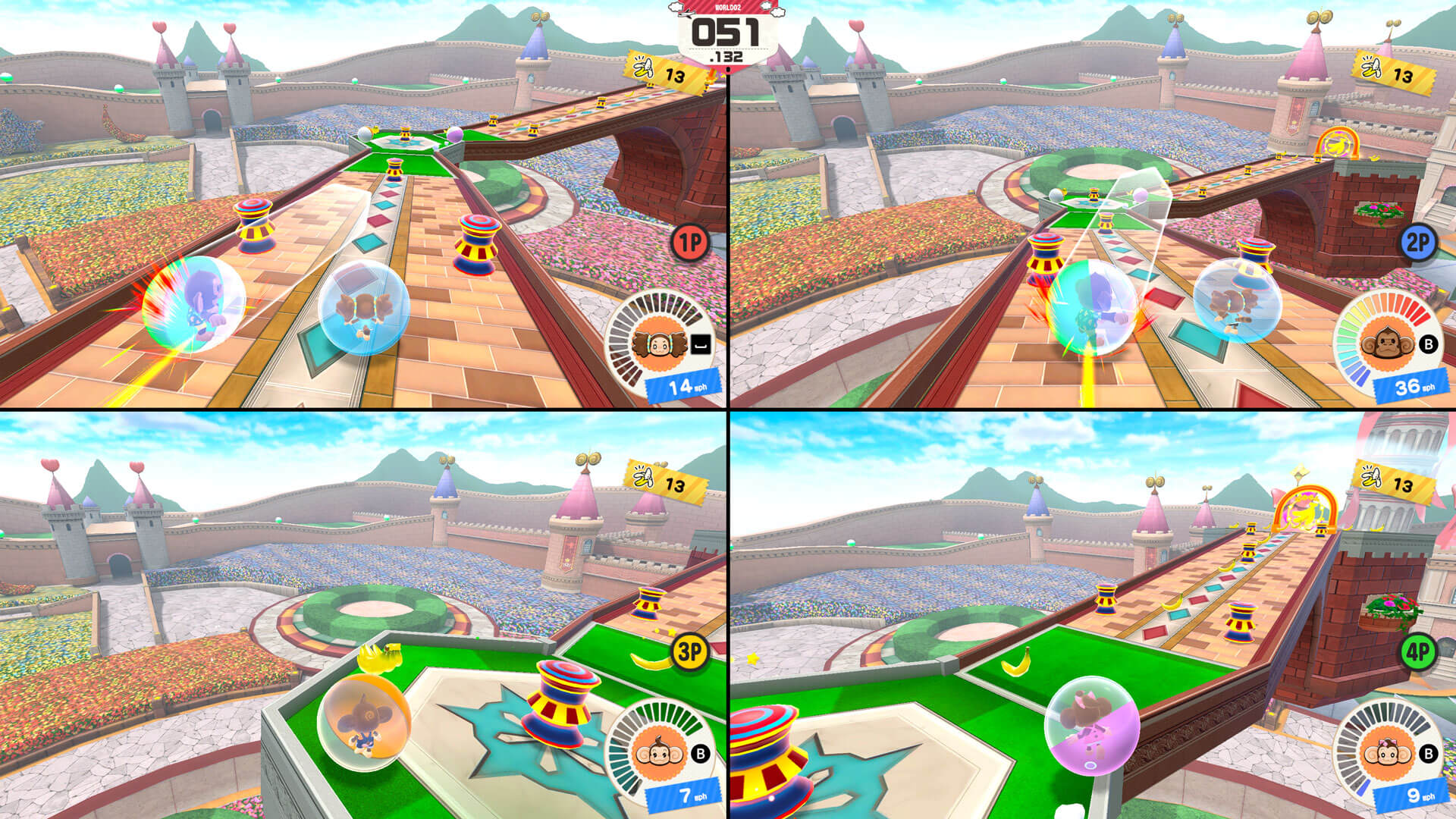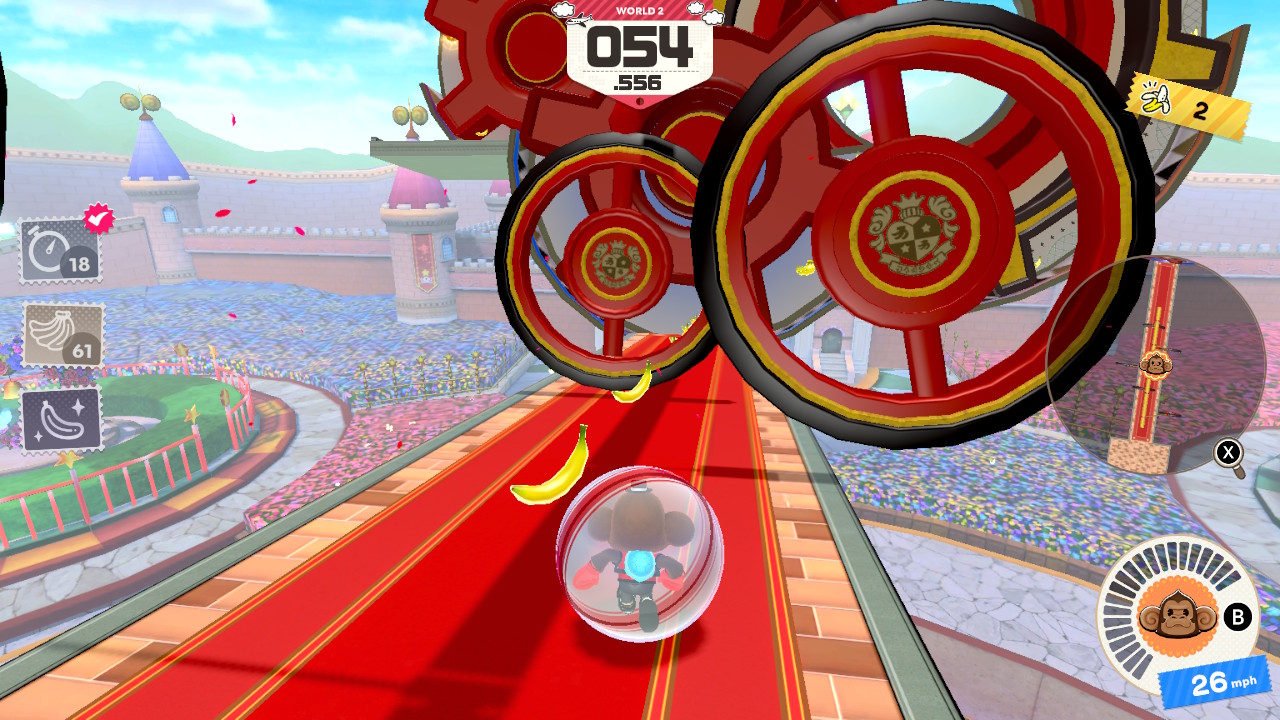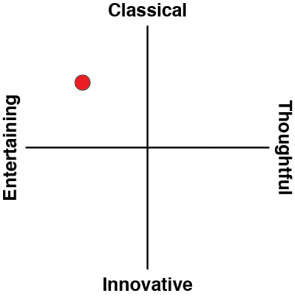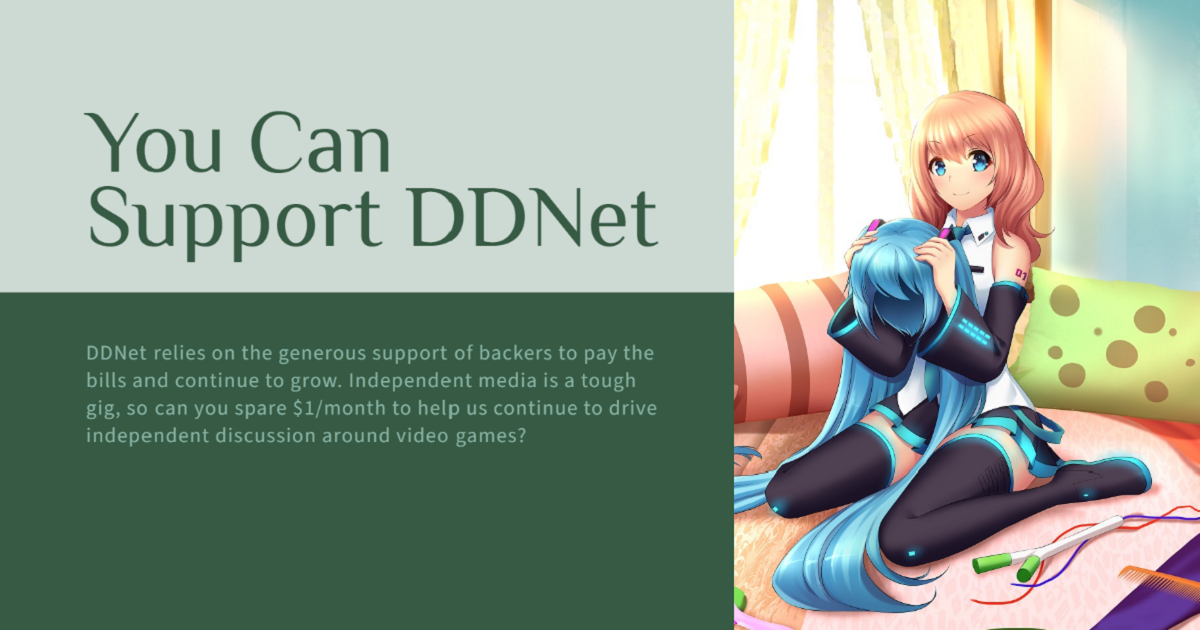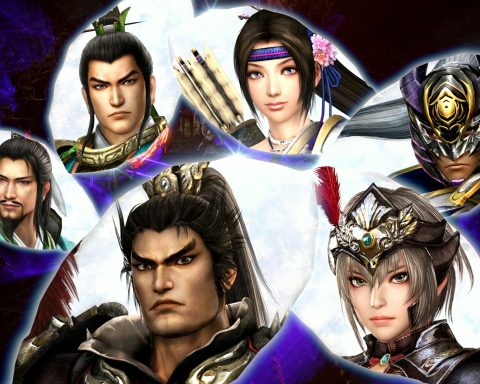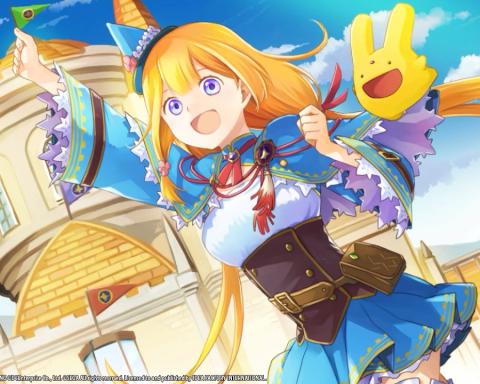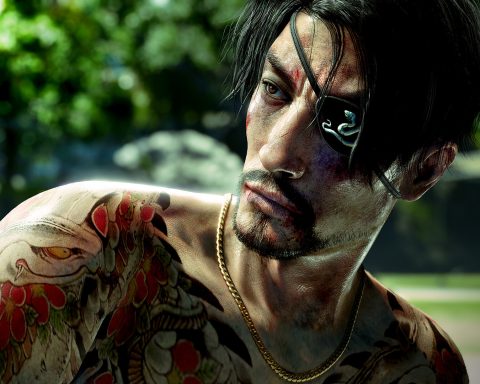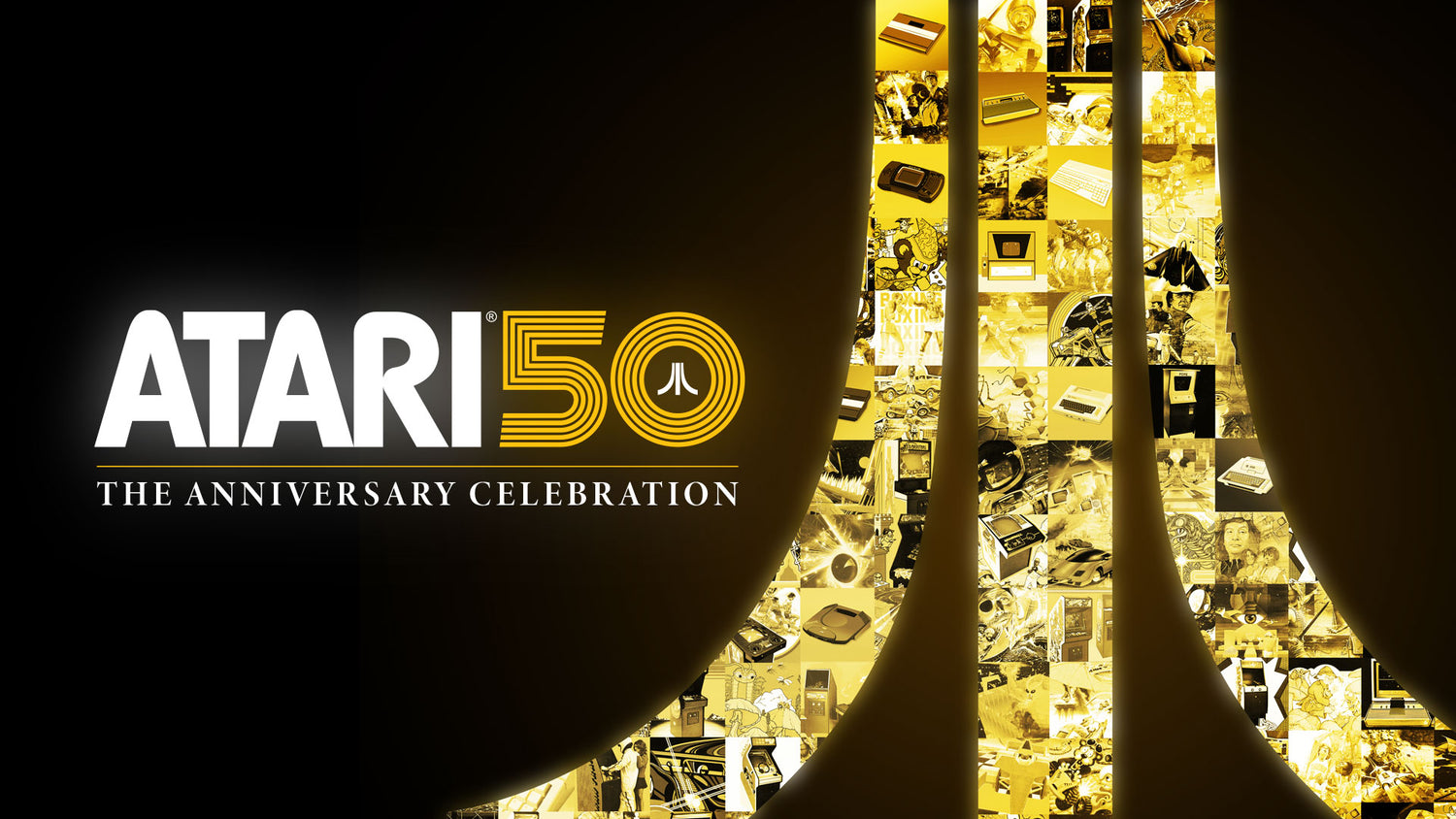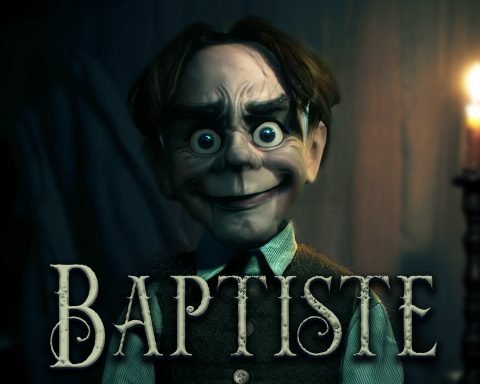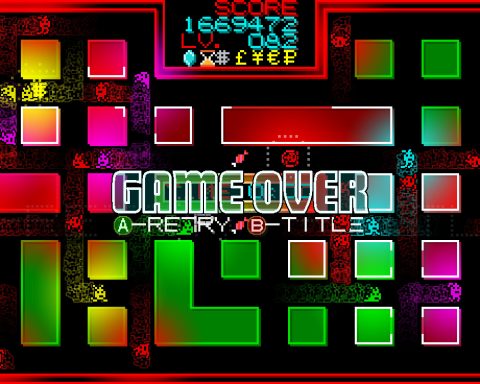It was inevitable that Monkey Ball would be inspired by Fall Guys. Given that both properties are best known for giving players a fun and chaotic gauntlet to navigate – albeit one by rolling and the other by running – the Fall Guys proven success as an online experience was inevitable for Monkey Ball too. And so many years after the last truly new Monkey Ball game, we have Super Monkey Ball Banana Rumble, as an effort to modernise and reset the ball-rolling formula, too. The good news is that this is the finest Monkey Ball game in a very long time.
The multiplayer has always been the truly entertaining soul of Monkey Ball. Previous titles have delivered that through minigames, which were often inconsistent in quality, but when the developers landed a good one (such as Monkey Target), it was a really good one. In Banana Rumble those minigames have gone, and instead, there are five all-new multiplayer games to enjoy that have all been designed around the idea of 16 players playing at once. The “vanilla” option is Race, where those 16 players try and throw themselves down a gauntlet of varied challenges, much like the mass chaos that occurs at the start of any given Fall Guys game. What is really neat about this mode is that you always feel like you’re in with a chance for a come-from-behind recovery, because the level actually morphs in real-time so that the player at the front of the pack has a far more difficult labyrinth than the person at the very back. There are still advantages to being at the front (namely, that you’re at the front), but it’s a helping hand that helps keep races competitive right to the end.
Other than Race, there is also Banana Hunt (where you need to roll around an arena collecting bananas faster than your opponents), Ba-BOOM (essentially a pass-the-bomb mode of tag), Goal Rush (where players are arranged into two teams and aim to roll their balls into gates, with the more difficult ones offering more points), and Robot Smash (where teams compete to try a and smash into the most number of robots over a few minutes of play). My personal favourite is Goal Rush, but they’re all worthwhile and best played in a sequence of five back-t0-back to maximise the variety of experiences.
Speaking of this, the developers did miss a trick not stringing together a multi-level “competition,” where you would compete over all five rounds, either in a knockout format or points-based score accumulation to determine an overall winner. That layers nature of competition was a fundamental part of the Fall Guys appeal and the single-round competition of Monkey Ball’s minigames feels a little limited as a consequence. It is also also disappointing that some old favourites (particularly Monkey Target) haven’t made an appearance given that it wouldn’t have harmed the package to give players the option of playing those instead (or as a break between the other modes). However, these criticisms are not a comment on the quality of the minigames themselves that are in there. All five are well-designed, highly playable and balanced. And, thankfully, if you’re playing with friends there is the option to fill the remaining slots with AI. Any less than 16 rolling balls on the screen drops the energy of these mini-games just a little too much, so it’s just as well that you don’t need to get 16 friends together to make the most of the experience.
When you’re ready to take a break from the multiplayer minigames, the adventure mode is excellent. This is the standard “you’re a monkey in a ball, now roll the ball over an obstacle course to a goal” arcade fun that has been around since the original Super Monkey Ball. In Banana Rumble there are a substantial 200-odd stages, with the first 100 being quite easy (almost too easy), and the second 100 being more “classic Monkey Ball” in difficulty. It’s unlikely that Monkey Ball will ever be as punishingly cruel as the original games were, but there’s enough intensity in Banana Rumble that it’s a worthwhile skill tester.
Best of all, Banana Rumble’s adventure mode is also playable in four-player cooperative. This is ideal if one of the players is a bit younger or less skilled… or is simply finding one particular level maddening, because only one person in the team needs to finish a level to clear it and let everyone move on. This also counts for the optional high-difficulty bonuses. Each level also has a golden banana to track down. It’s in a particularly challenging part of the level, so the most skilled can go after it, and even if they fall off the stage after collecting it, as long as one of the other players reaches the goal, it counts as having been collected. Monkey Ball rewards teamwork! It’s such a wholesome game.
Alternatively, you can turn “friendly collision” on and then watch as everyone instantly reverts to trying to blast one another off each stage instead, and no one makes any progress whatsoever. That’s fun too. Monkey Ball isn’t prescriptive in how you’re allowed to enjoy it.
Otherwise, Monkey Ball’s adventure mode hasn’t changed that much over the years. You’ve still got just a minute or so to get to the goal, and all the classic Monkey Ball tricks are in play. There are sharp angles, gaps to try and jump at speed, levers, moving platforms, and especially those strategically placed bumpers that you’ll navigate like you’re wandering around a minefield. The variety in those levels is as solid as it has ever been, and many of them are designed in such a way as to encourage you to try something crazy, with low odds of actually succeeding, but with the reward of a heck of a replay if you do manage to pull it off. Thankfully there is the ability to save replays, and the Switch’s ability to save short, 10-second clips is more than enough to capture and share your wildest antics (mind you, it would have been much easier to share those antics if Elon Musk hadn’t have killed off the Switch’s ability to link to Twitter…).
Finally, there are some unlockables, and a predictably naff story mode, but Monkey Ball has never needed these things. The basic arcade gameplay never needed anything more than creative levels and fun aesthetics to succeed, and regardless of what you think about how thin that superficial stuff is, Banana Rumble won’t let anyone down when it comes to its core.
For a series that has struggled to recapture the lightning-in-a-bottle magic of that first title from a few decades ago, it’s great to see that with Super Monkey Ball Banana Rumble the developers have landed on what might be a strong future direction for the series. Banana Rumble in itself is a little undercooked overall, but it’s still pristine Monkey Ball action, backed by manic good fun multiplayer, and hopefully will be backed up with a second game that more completely executes on the potential.
